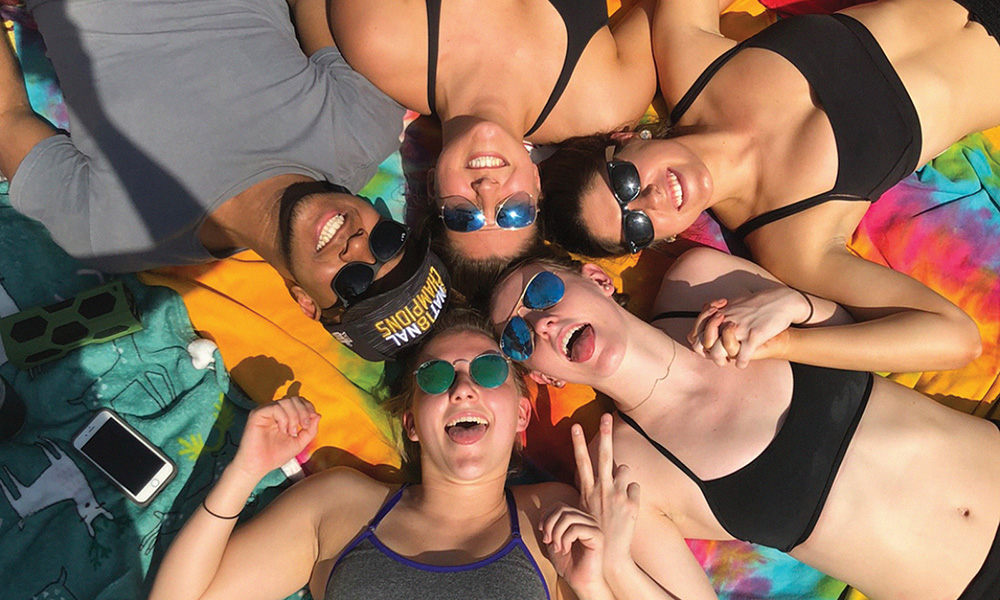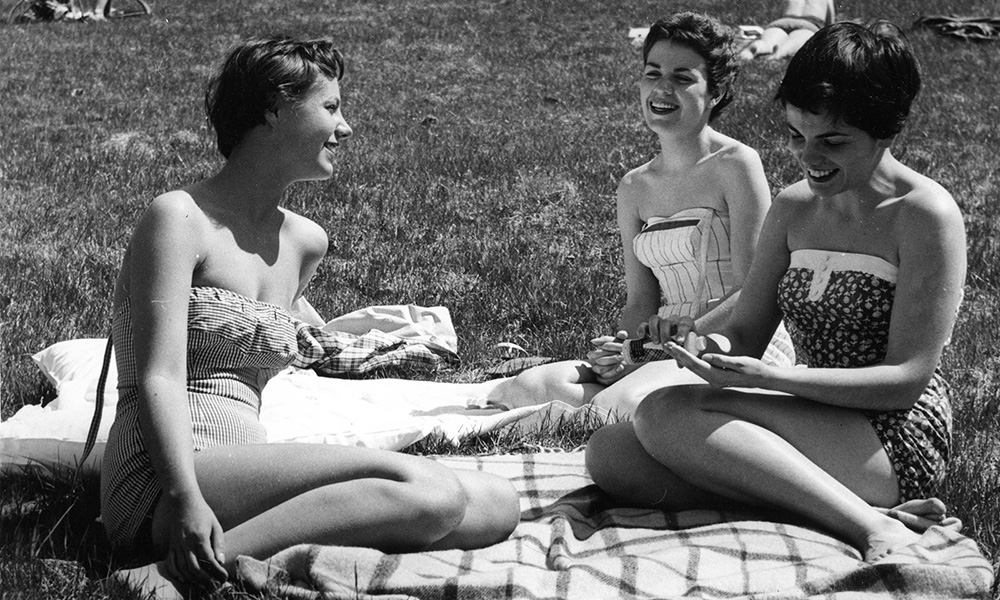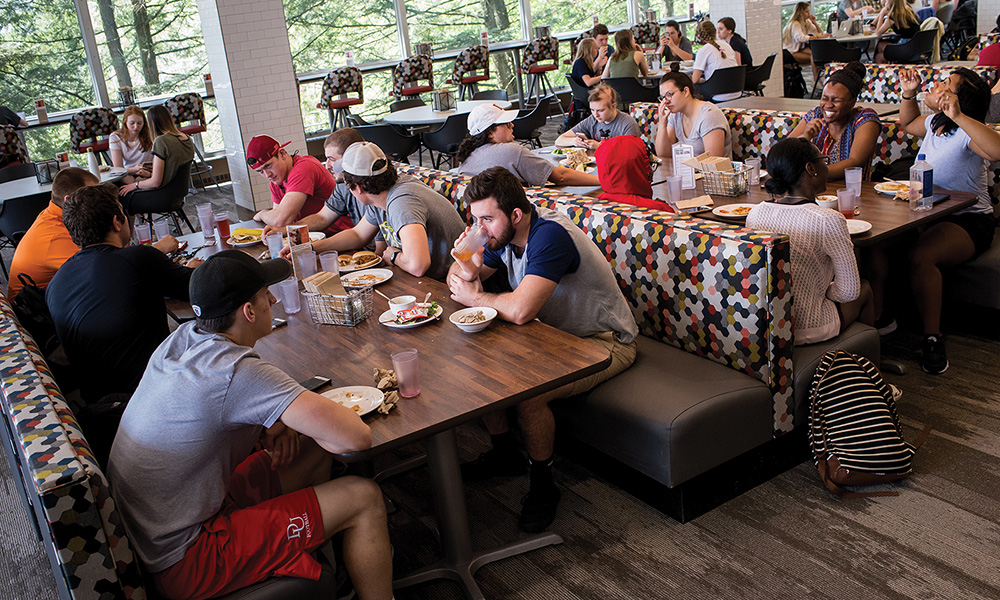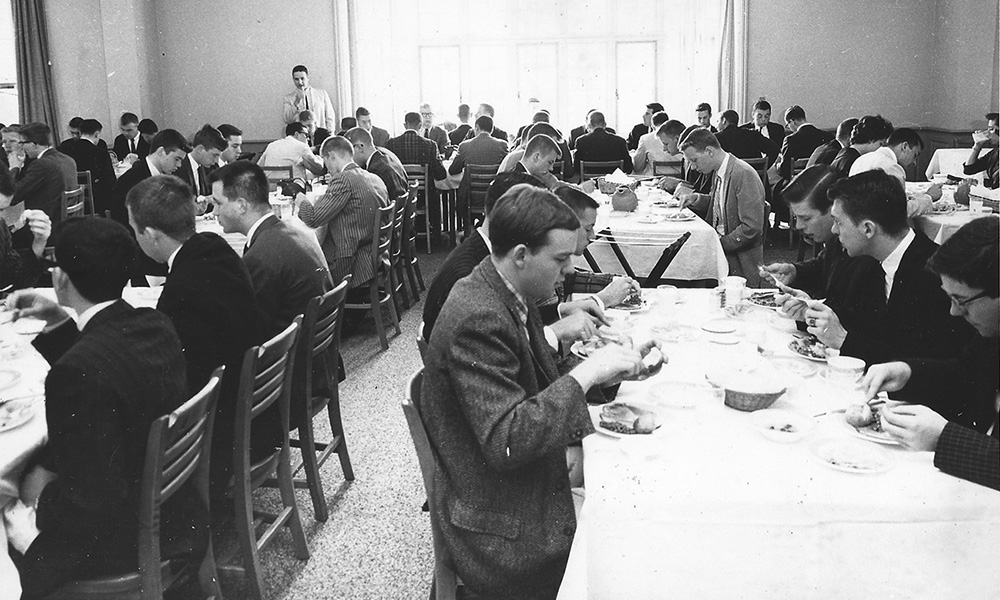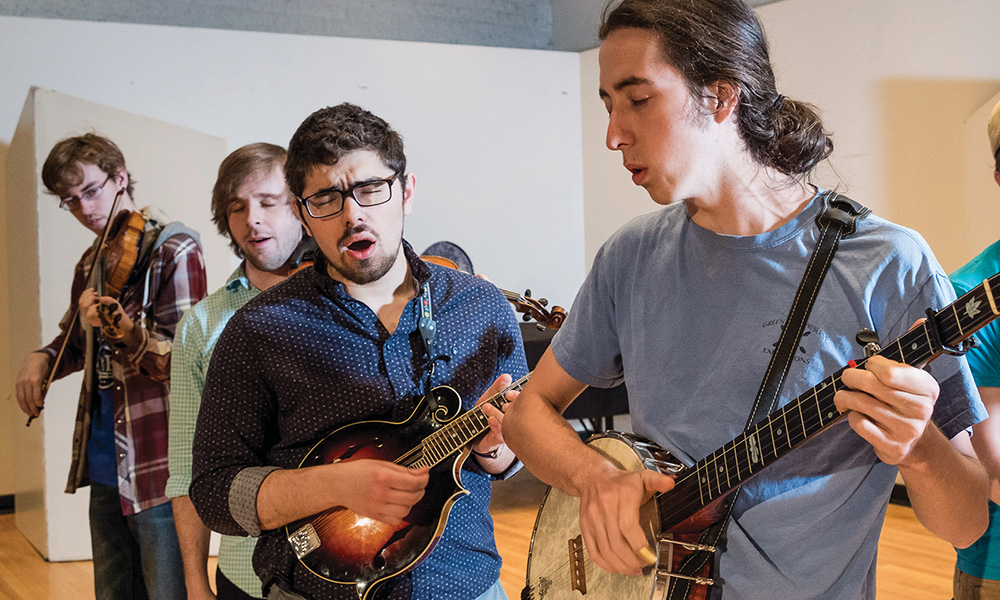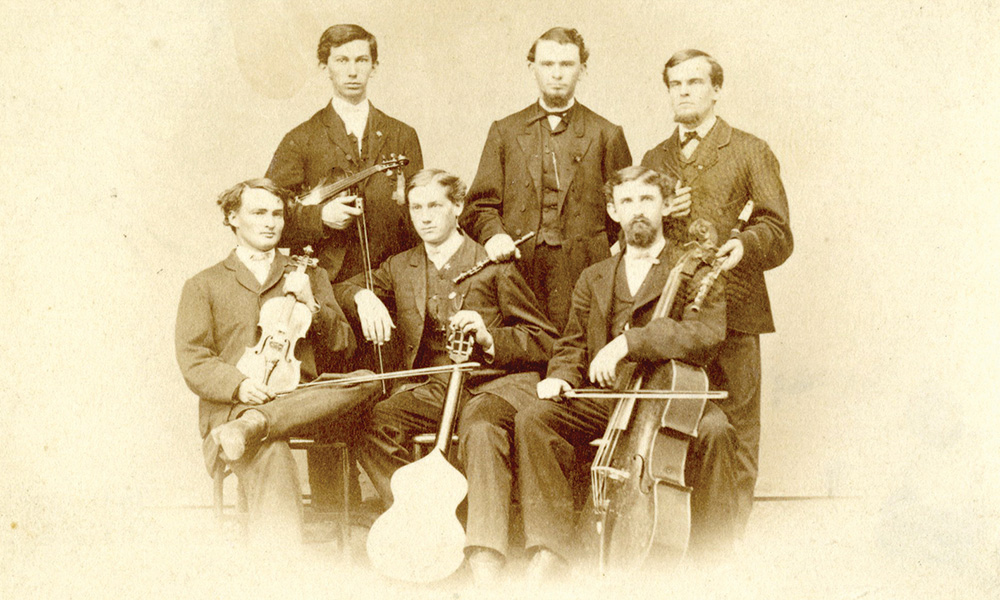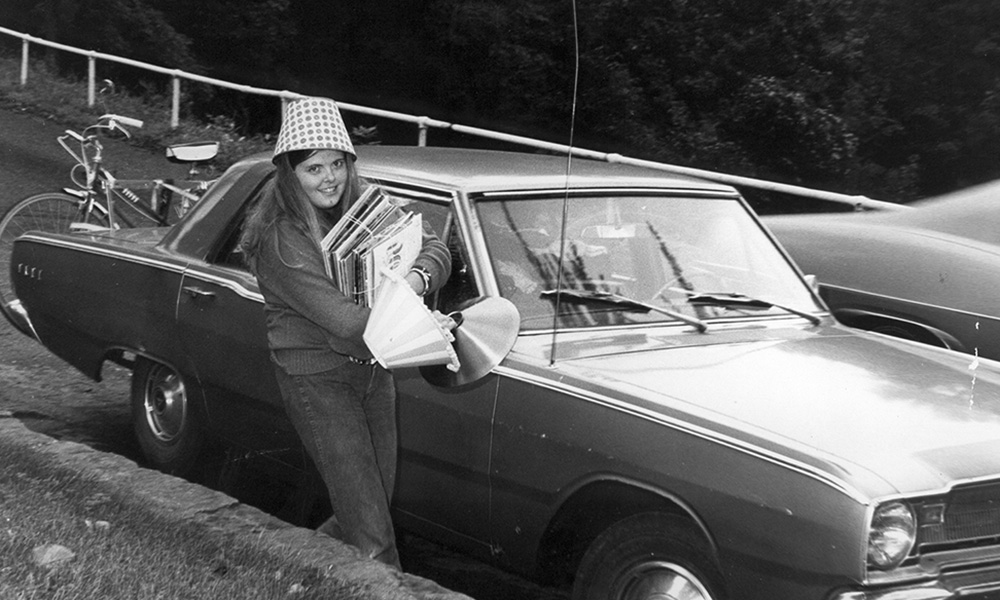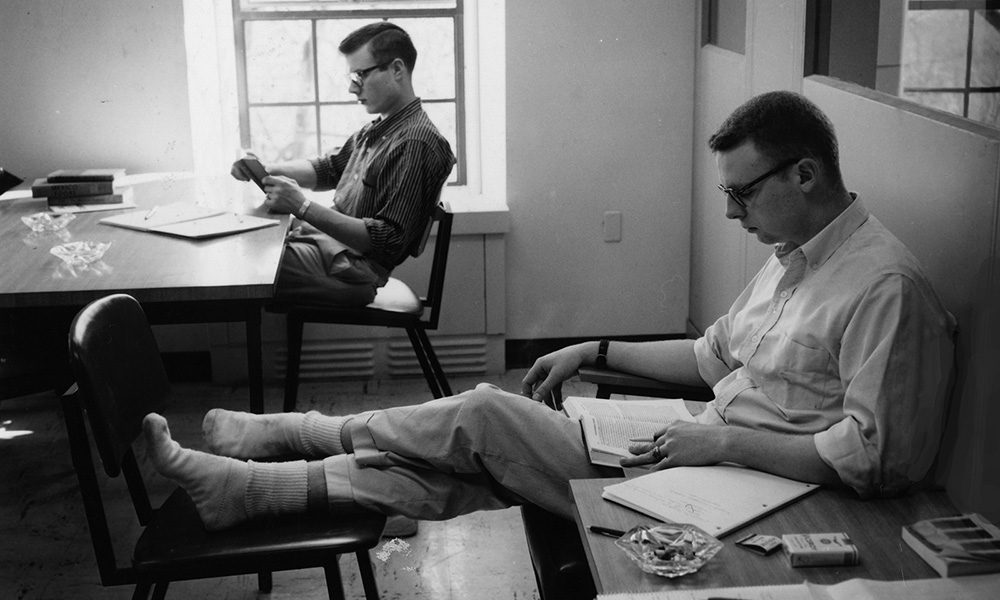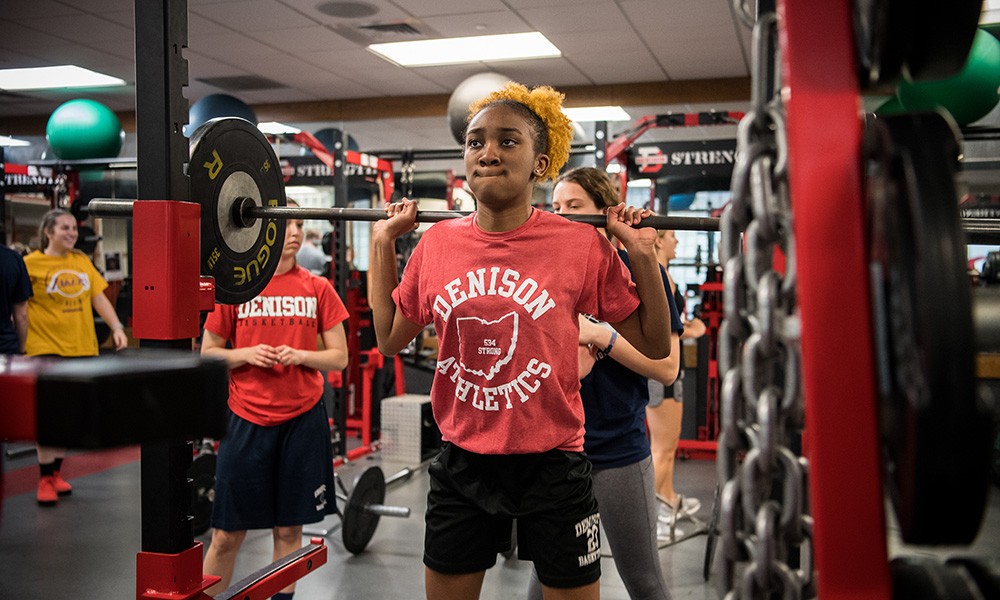1959: When the East Quad was for women only, the once-sweeping hillside down to the gym earned its nickname, “Skin Hill,” on the warm spring days before finals.
Now: Sun worshippers in shades are still out there on Beaver Beach, soaking in tunes and vitamin D.
Still Counting
1908: The freshman class of 1912 posed with proud swagger on East Broadway this early autumn day, having just trounced the sophomores in the annual Cane Rush contest. The game had variations through the years, but it was essentially one part “capture the flag” and 10 parts unrestricted brawling in the dirt. By the 1950s, the annual freshman/sophomore competition had evolved into a vigorous tug-o-war over Raccoon Creek.
Now: The excellent Class of 2021 just graduated, 489 strong, and here they are four years earlier, their first full morning on campus in August 2017. Pretty good bet this was the last time they were all together in the same place until Commencement on May 22.
Fine Dining, Curtis West
1966: The old Curtis dining hall had strict boarding school rules in the ’60s: “Men are expected to be neatly attired in the dining room. Coats and ties are required for dinner. In the event that the weather is unusually warm, the Head Residents may authorize the omission of coats. Behavior in the dining rooms shall be consistent with the commonly accepted rules of etiquette.” Just asking for trouble.
Now: The Jetsons-style dining hall for the former men’s quad opened in 1968 to hold the hungry boys living in the new Shorney Hall. Its most recent transformation was in 2017, into an open-plan oasis. Eating is still the main idea, but after meal hours, you don’t get booted—it’s a great spot to study and hang out by the fire.
Roots Music
1860s: Back when the curriculum was theology, philosophy, Latin, and Greek, students with a love of music found each other after hours and jammed. These Civil War–era students may look formal, but their style of music would have included fiddling and folk-based tunes.
Now: It’s what Adam Schlenker, coordinator of bluegrass studies, calls American roots music—which includes bluegrass, but branches also include Appalachian string band, fiddle music, delta blues, gospel, jug band, you name it. His plan was just approved to expand Denison’s successful bluegrass program into a deeper American roots concentration beginning this fall. Besides performing traditional songs, students will be writing their own compositions—preserving and perpetuating the “by ear” approach to music-making.
Bulk Delivery
1973 vs. Now: SUVs are the most recent stage in developing the perfect student-to-college delivery system.
Armloads of stacked LPs and big stereo components have been replaced by flatscreens and the luggage of today: hundreds of plastic storage tubs. Also, first-years are now welcomed by student staff and the football team, ready to help them haul all the stuff up to their new nests.
Postural Learning
1959 vs. Now: The brain seems to be more receptive (or less resistant) to new information with the body in a relaxed posture. That’s better. And maybe something to drink and a snack. And before you know it, you’re looking out the window to see what other people are doing. The library still does what it can to keep you on the narrow path of progress by forbidding food and drinks, apart from water. And you really shouldn’t slouch.
Twist & Shout
1973: Dance parties (playing loud music and dancing en masse) seem to be less common than they were in the 20th century, but it could just be that we aren’t being invited. While the ’60s brought dances like the Twist and Boogaloo, the early ’70s saw a fad for WDUB “sock hops,” with retro 1950s approximations of the Lindy Hop and Jitterbug. Or whatever. Here we see authentic saddle shoes and bobby socks, but this pair clearly doing the 1960s Jerk. Extra points for tight synch.
Now: “Inspire. Diversity. Move.” Dancing can also come with a message, and the I.D.M. hip-hop dance crew were out on the quad during Involvement Fair, mixing solidarity and a good time.
Champs
1917 vs. Now: Don’t judge these warriors by their flouncy costumes—the 1917 Shepardson basketball team was a formidable group who liked to win. Doane gymnasium (now Doane dance) was built upon the “new principle of physical exercise” for women at the turn of the last century, aiming to train and develop the body “in harmony with natural laws.” The Shepardson girls would “play basketball, run, jump, swim and do all the things that are so good for them to do.” These days, the Crown Fitness Center sees at least as many women as men each day, building not just muscle groups but also persistence and discipline.


